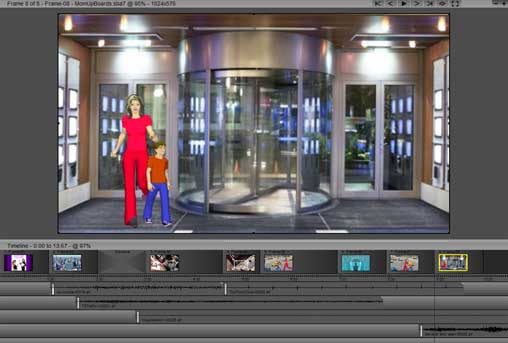

“basic landing page” or “responsive website”, etc.Īll the online story mapping tools offer a description section, so you can add notes and useful thoughts to a card.

Try to write short/smart user stories from ideas, e.g. “as a visitor I'd like to land on a clear, easy-to-understand website”. You don't need to think in features, just write down the user stories – e.g.
STORYBOARD QUICK 3 HOW TO
Now we have the product backbone, let's find out how to solve some steps.

The easiest way to discover the whole journey is following the narrative flow. Our user would find hotels, then she/he would choose one and book a room.įor better understanding the user map journey, what steps does a user take to reach the goal? The basic journey to find hotels could be the following: visit main page -» start a search -» refine results by adding filters (e.g: period) -» rearrange search results (e.g: by price). For example, you're designing an online accommodation platform, where visitors can find, compare offers and book a room. What are the main requirements that need to be satisfied using the product? Let's write down these goals in a narrative flow, if it's possible. User story mapping expends a lot of effort focusing on the end user, so you need to frame the problem and the users' goal(s). Thanks to online tools, the process moved to virtual white boards and can be integrated to a JIRA project. It is very intuitive so it's easy to learn for non-technical participants – and involving them delivers additional value to a design process. First off, user story mapping is a visual product planning method, that is originally designed for white boards or office walls. You'll easily find plenty of valuable education materials on the net, but let me summarize the story mapping method in 5 short steps. If you're already using story maps, then jump to the next session: I've collected 5 quick wins that could be new for you. If you are new to user story mapping, then I'll give you a short teaser of the method. The stakeholders liked it too, because it was intuitive and easy-to-understand. Why did they reach this conclusion? Because product owners started to use story maps for managing backlogs because it was tremendously easy. Finally they realized, it isn't just about a different way to plan, it's a better way to manage the whole dev process. I've met several teams which started using story maps in JIRA for improving the product design process.


 0 kommentar(er)
0 kommentar(er)
